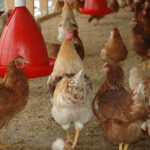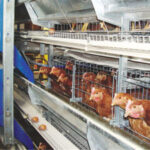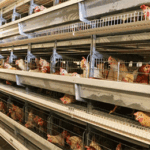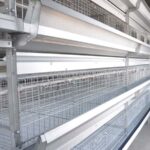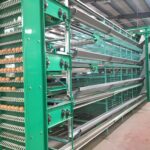Seasonal matters that should be noted when using broiler cages
In the whole season, the temperature and humidity of each season will change greatly. For the chickens, the farmers should do a good job of management during the season, so that the chickens can smoothly change seasons without causing diseases and other problems. Based on the experience of poultry equipment manufacturers, what are the issues to be aware of when broilers change seasons?
1. Temperature is one of the main factors in the stage of raising chickens. The optimum temperature can give the maximum benefit of the feed. Too low a temperature can easily cause respiratory illness and death in chickens. The judgment methods are as follows: one is to hang the thermometer at the same height as the chicken, and the first week of autumn and winter brooding is generally controlled at 35 ° C ~ 36 ° C, and then decreased by 2 ° C ~ 3 ° C per week, the second is according to the chicken reaction, This is also a problem that farmers should pay attention to. When the temperature is too low, the chickens scream and gather. When the temperature is too high, the chickens are scattered and have a gasp. The temperature is suitable for the chickens to be evenly distributed. It is also possible to use a combination of a thermometer and a sense to determine if the temperature is suitable.

2. The broiler cage manufacturer reminds the farmers to pay special attention to the dryness and cleanness of the litter during the broiler breeding process. During the brooding period, the farmer should use the straw to make the litter, which is relatively dry and is conducive to raising the temperature; the medium and large chicken stage temperature should be lower than 18 °C to thicken the litter to increase the temperature.
3. The chicken house is fresh in air and can effectively prevent respiratory diseases. Harmful gases or dust in the air can affect the health of the chicken and even cause death. In the chicken house, anaerobic bacteria decompose feces and nitrogen-containing organic matter to produce ammonia gas, and the ammonia concentration in the chicken house is 15×10-6, the chicken will feel uncomfortable, plus winter and spring seasons, when the coal stove is used for heat preservation. A large amount of harmful gases such as carbon monoxide, carbon dioxide, hydrogen sulfide, etc., should be ventilated without lowering the normal room temperature, reducing the content of harmful gases and dust in the house.
4. Pay attention to reducing stress response. Farmers should know that excessive sound, transfer, vaccination, sudden changes in weather, and broken mites are a bad stimulus for chickens, often causing disease. Farmers should avoid unnecessary chicken catching and disturbing during the breeding period. Anti-stress drugs can be administered for prevention before switching to groups, vaccinations, and sputum breaks, and cold stress caused by temperature drop can be dealt with.
5. Excessive density can also cause unbalanced growth of chickens and increase of harmful gases in the air. Especially in autumn, the humidity is high, and chickens are easily infected with E. coli, coccidia, staphylococcus, etc. and can accelerate the disease. Therefore, the poultry cages manufacturers recommends that you generally control about 10 babies per square meter.
